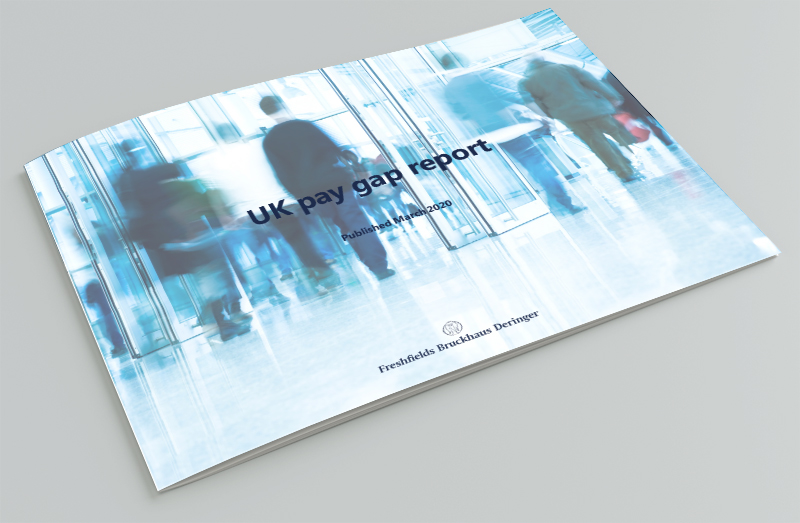

The gender pay gap
Gender pay gap around the world
Men have long earned more than women. But laws and regulations are being introduced to redress the balance.
In the EU at the end of 2017, approximately two thirds of women and three quarters of men were in employment. Survey data showed that female workers were more highly educated than their male counterparts but they earned less and received less in the way of pensions. The average gender pay gap in the EU at the time was 16 per cent, although it varied significantly between member states. Legislation has been, or is being, introduced, with the aim of narrowing the gap, both in the EU and in other countries across the globe, as the following examples indicate.
Austria
- Under the Austrian Equal Treatment Act, any gender-related discrimination on salary is unlawful.
- The National Action Plan for Gender Equality in the Labour Market requires companies to publish equal pay reports every two years.
- Job vacancies have to address both male and female applicants or must be formulated in a gender-neutral way.
Belgium
- Since 2012, companies have to include information on their gender pay gap in their annual audit.
- Businesses with more than 50 employees must produce bi-annual reports on their pay structure that are shared with the works council. If this analysis shows that pay appears not to be gender-neutral, the company is obliged to develop an action plan to address it.
China
- The Law of the People’s Republic of China on the Protection of Women’s Rights and Interests requires that there be equal pay for equal work irrespective of gender and that women have the same rights to welfare benefits as men.
France
- The 2006 Act on Equal Pay between Women and Men makes provision for compulsory collective bargaining on gender equality and requires companies to report on salaries across their workforce. The French government has strengthened existing sanctions against firms with 50 employees or more that do not comply with their obligations.
- Under a new law, employers with at least 50 employees are required to publish a yearly gender pay gap review with an indication as to its evolution. If a breach of the equal pay principle is revealed, employers are required to formally initiate negotiations with unions to reach an agreement on an annual or multiannual program of financial catch-up measures. If no agreement is reached, these measures can be determined unilaterally by the employer after consultation with its economic and social committee.
- Companies have three years from the date of discovery of the breach to comply with it. Failing this, if the indicators continue to show a pay gap above a certain minimum rate (to be determined by decree), the employer could be subject to a financial penalty of up to 1 per cent of the total payroll.
- These provisions have entered into force on 1 January 2019 for companies with more than 250 employees and will come into force by 1 January 2020 for companies with 50 to 250 employees.
Germany
- The German legislation on equal pay (Act on Pay Transparency) was enacted in 2017. Under it, men and women must not be paid differently for equal work or work of equal value.
- The Act grants employees the right to receive information about the average monthly remuneration of a group of at least five employees of the opposite sex who work in the same or equivalent positions, provided the employer regularly employs more than 200 employees (including apprentices).
- The Act also requires companies that regularly employ more than 500 people (and that are obliged to prepare management reports under the German Commercial Code) to publish reports on gender equality and equal pay, including measures taken to encourage gender equality.
Japan
- The Labour Standard Act prohibits gender-related pay discrimination.
- Although Japan’s gender pay gap is narrowing, a 2016 survey revealed that the average salary of a woman working full time was 17per cent lower than her male counterpart.
- The main reasons for the gap are i) shorter length of service (60per cent of working women stop working after having children) and ii) the low percentage of women in managerial roles.
Netherlands
- The gender pay gap in the Netherlands is higher in the private sector than in the public sector.
- The gap is bigger in older generations, mainly due to the fact that more young women are educated to a higher level than in previous generations. At present, young, highly educated women in the Netherlands earn more than men of the same age.
- The Act on Equal Treatment of Men and Women and certain specific Dutch labour law articles are aimed at achieving equality of pay between men and women.
- The Netherlands Institute for Human Rights is in charge of compliance with these rules; after a written consultation – or on its own initiative – the Institute can start an investigation.
- Currently there is a legislative proposal designed to reduce the gender pay gap. It would require, among other things, companies to disclose pay information to works councils and in their annual accounts.
Spain
- In Spain, equal pay for equal work (or for work of equal value) is guaranteed under national legislation.
- Companies with more than 250 employees are required to design and implement gender equality plans, which must be negotiated with workers’ legal representatives.
- In addition, companies that achieve outstanding results in the implementation of equal treatment and equal opportunities policies are awarded a ‘business equality label’ each year by the Secretariat of State for Social Services and Equality.
UK
- In 2017, gender pay gap reporting legislation came into force. Employers with at least 250 employees on 5 April in any given year are required to publish a gender pay gap report using gender-related pay data captured on the same date. The report must be published by 4 April in the following year.
- The report must contain information on the differences between the mean and median hourly pay of male and female employees, the differences between the mean and median bonuses paid to male and female employees, the proportions of male and female employees who receive bonuses in a 12 month period, and the proportions of male and female employees in each pay quartile within the organisation.
- The obligation to report applies to each separate company (based on the number of employees in that company) rather than the group as a whole.
- Employees of a UK company who are based overseas are within scope of the reporting requirements if those individuals are able to bring a claim to the UK Employment Tribunal.
- Gender pay gap reports have to be made available on a company’s website (alongside a written statement signed by a director) for three years as well as on a designated government website. The Government Equalities Office and ACAS have published joint guidance on the rules.











